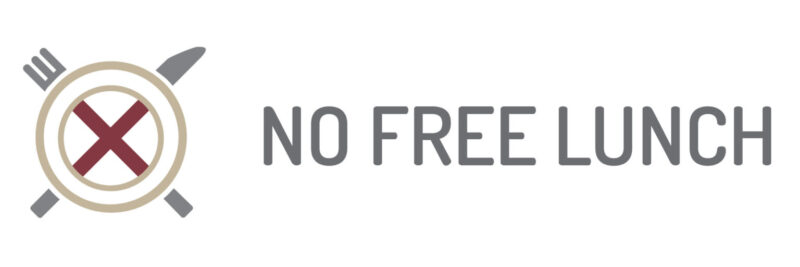Learn how the Great Recoinage and two of the nation’s greatest thinkers, John Locke and Isaac Newton, saved 17th-century England from running out of money due to coin clippers, counterfeiters & speculators.

In the 17th century, England was running out of money. Coin clippers were debasing the money stock, and speculators were discretely shipping it to Europe for profit. Struggling to finance his war with France and with the masses growing restless, William III turned to the greatest thinkers of the era, and the plan for the Great Recoinage was hatched.
Remedying the Ill state of the coin
In 1696, during the reign of William III, the English Parliament enacted what sounded like a pretty dramatic piece of legislation – The Act for Remedying the Ill State of the Coin. Translated into modern speak, the legislation was required because the coins in circulation were in a mess.
Firstly, coin clipping and counterfeiting had become so widespread that only one coin in every 2,000 was deemed to be genuine. The consequences were just as John Gresham had predicted; bad money drove out good.
The old stock of hammer struck money, clipped and debased, circulated while newer coins, heavier and machine-made since 1662 with their milled edging to prevent clipping, were being hoarded.
Clipped coins weren’t considered a valid means of payment, so tax revenue fell off a cliff with only ten good shillings in every hundred pounds.
Great masses were melted down; great masses exported; great masses hoarded; but scarcely one new piece was to be found in the till of a shop or in the leathern bag that a farmer carried home after the cattle fair.
Victorian historian, Lord Macauley
There was even a mini-riot in Kendal in Cumbria when a tax collector refused payment from a throng of 20 people because the coins were clipped.
The second problem was that it just wasn’t cost-effective for the Mint to produce low-denomination coins, the lifeblood of the working-class economy. Producing small denominations in silver wasn’t cost-effective and had even led to the emergence of tokens as substitute money.
A detectorist recently found a great example of a trading token in Filby, the East of England. It was issued between 1653 and 1655 by a widower called Rebecca Murril for her bakery.
Back in 1696, small coinage – halfpennies, pennies and farthings – were made of copper, having already been debased by Charles II’s Royal Proclamation of 1672.
Last but not least, the poor state of England’s coinage created a golden opportunity for speculators. The value of silver bullion measured in gold in Europe – about one and a half pennies per ounce – was greater than the equivalent amount of silver as coins.
Even though melting down official coinage was illegal, that bizarre arbitrage was too good to resist for speculators, with massive outflows of silver coins to Amsterdam and Paris for exchange into gold.
Gathering the great & good to sort the money mess
Faced with these huge monetary issues and desperate to finance his war with France, William III asked his Secretary of Treasury, William Lowndes, to gather together the greatest thinkers of the era.
Among Lownde’s monetary A-Team were:
- Isaac Newton – Yes, that Isaac Newton. Though famous for establishing the mechanics of gravity, Newton was drafted in to apply his analytical mind to what boiled down to a mathematical problem and made Warden of the Mint.
- John Locke – The celebrated philosopher and inspiration for the American Revolution who in 1691, had written papers on money and trade.
- Sir Christopher Wren – Another household name famous for designing St.Paul’s Cathedral, Wren knew his way around government and budgeting huge projects.
- Charles Davenant – An excise official and regarded as an OG within political economics,
When this formidable set of minds debated how to remedy the ill state of the coin, there was a significant difference of opinion as to the solution.
Two distinct camps formed, one favouring the retention of the purity of coins and the other tempted by devaluation – minting coins with silver content below face value.

In the red corner was John Locke, who felt that a whole new set of coinage of full purity was needed to replace the clipped and worn junk in circulation, regardless of the prohibitive cost.
Locke’s argument quoted historical precedents, such as the Romans. It struck directly at the heart of the problems of debasement, describing it as ‘a clipping done by public authority, a public crime.’
Monetary debasement ‘a clipping done by public authority, a public crime.’
John Locke, 1696
Opposing Locke was Isaac Newton, who was in favour of complete recoinage to defeat the counterfeiters and coin clippers. The second part of Newton’s plan was to stem the steady flow of silver overseas by defying financial gravity and devaluing the value of silver relative to gold.
What Newton saw was the embryonic idea of money having a value beyond that indicated on a coin and how that price would be what mattered more. It was a glimpse into a future beyond commodity money and what today we know as fiat money, where value derives simply from trust.
But Newton’s ideas were too far ahead of their time; Locke successfully argued that the impact of devaluation on public confidence would be too great.
The consequences of recoinage
The problem of coin clipping had already been solved by 1662 when new coins were manufactured, not struck, using a ‘screw press’ mechanism that created a milled edge.
But as the government had decreed that only coins must be returned and exchanged by weight, recoinage and the effects of nine years of war with France created a cash shortage.
The issue of counterfeiting was addressed directly by the Coin Act of 1696, but the kicker for the plan to flush out all the preexisting clipped coins was that the process was hugely expensive and time-consuming.
£7,000,000 pounds of silver coinage was needed in three years when the Royal Mint could only turn that amount out over nine years.
It cost the government half of its annual revenue – £2.7 million. The solution was to introduce the infamous window tax, a literal tax on the number of windows a property possessed.
The window tax had terrible consequences as many people bricked-up windows and ventilation to avoid paying. Still, the reduction in natural sunlight and fresh air within homes impacted general health and led to an increase in diseases like typhus, cholera and smallpox.
The cost wasn’t the only issue; the logistics proved a huge challenge. Five regional mints were set up to produce the new coins, but they couldn’t produce them fast enough, so Newton had to examine the workings of the Mint in London and find a way to increase its output dramatically.
His success cemented his reputation and brought him considerable wealth as the Warden of Mint received a commission on every coin minted.
From coin clipping to 21st-century monetary debasement
The remedy used in 1696 for the ill state of the coin isn’t just a fascinating piece of monetary history; it’s considered instrumental in what later became known as the ‘gold standard’ where commodity money was replaced by representative money, in the form of notes back 1:1 by gold reserves.
The newly created Bank of England began to issue Exchequer Notes, which were both money and interesting bearing security, the forerunners of notes we know today.
Promissory notes (IOUs) were a natural evolution following Aristotle’s tick-list for sound money as they improved on the characteristic of portability.
The era of the gold standard is associated with economic success and global stability through terms such as the Golden Age or La Belle Epoque. But that temptation to devalue money – as suggested by Newton – was always there and proved too great for US President Richard Nixon to resist facing economic problems and expensive war.
In 1970, Nixon instituted a new law which ditched the remnants of the gold standard and made fiat money, backed by nothing but trust in the issuing authority, the global norm.
Fiat money remains to this today, allowing governments to create money out of thin air. This is why money isn’t worth the paper it’s written on, and coins are worth less than their constituent metal.
The question is whether the current monetary orthodoxy will experience the same fate as countless empires that were tempted to perform ‘a clipping by public authority’ but were ultimately brought back down to earth by the laws of financial gravity.
No Free Lunch
There is no such thing as a free lunch, but if you’re hungry to find out why, we’re here to help.
You can learn the meaning and origin of the no free lunch concept, as well as the broader philosophy behind the idea that nothing can ever be regarded as free.
We look at our relationship with money and truth, examining all of the supposed shortcuts, life hacks and get-rich-quick schemes.
